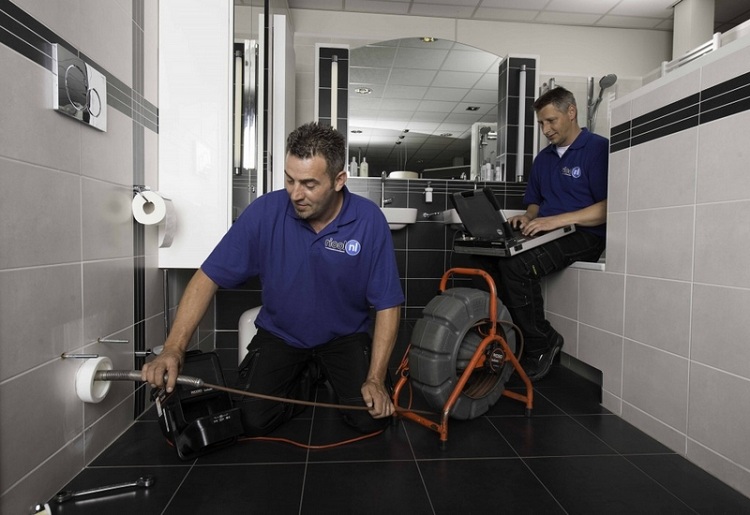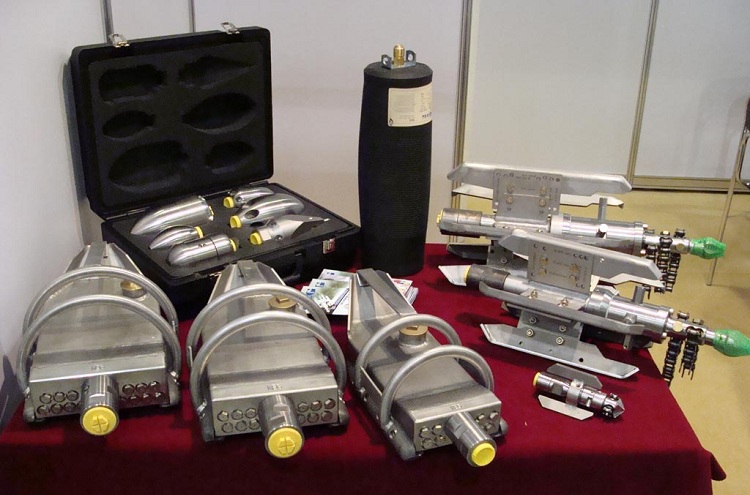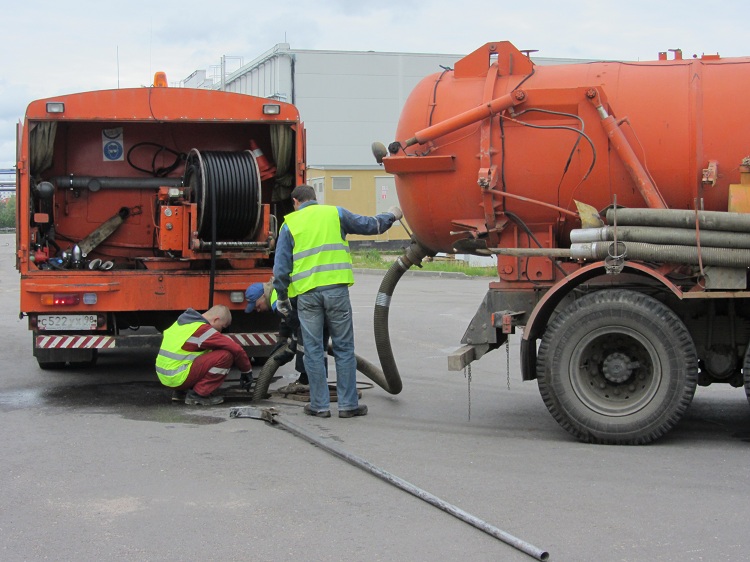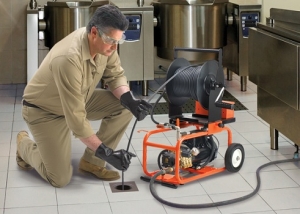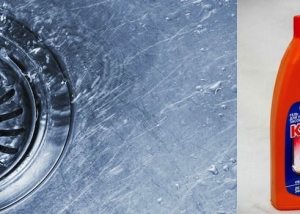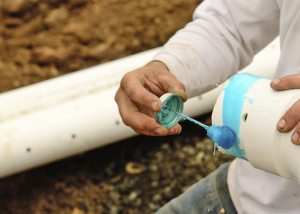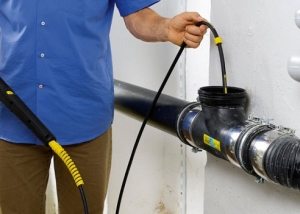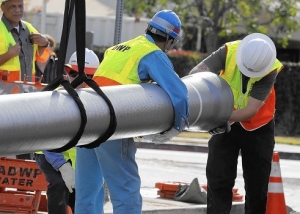Hydrodynamic cleaning of sewers is a modern method that allows to achieve full restoration of the patency of the drainage system. At the same time, one does not have to resort to the use of special chemicals that cause ecological damage to the environment. The proliferation of compact high-performance units made it possible to quickly conduct hydrodynamic washing of pipes with a diameter of 50-1000 mm.
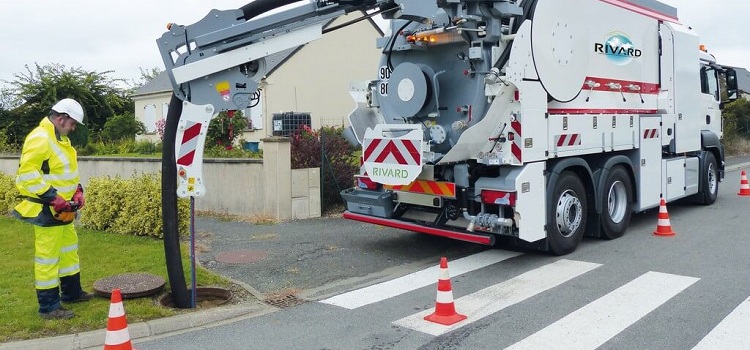
Cleaning the drainage system with a hydrodynamic installation allows you to cope with the most difficult tasks
Content
Why clogging occurs in pipes and how hydrodynamic cleaning works
To clean the sewage system in a hydrodynamic way, both mechanical and chemical, if you follow a clean theory, you should not resort at all, since the installation of the system is carried out with the expectation of the ability to independently clean it. However, the occurrence of blockages occurs and subject to the requirements of the operation of the sewer system. The appearance of deposits is explained by:
- slope violations made during pipe laying;
- hit of objects that cannot be moved by the water stream;
- violation of the hydraulic regime;
- continuous operation of the system without cleaning.
Reducing the internal section with the appearance of growths on the walls reduces the efficiency of the system. Moreover, the intensity of the pollution process is growing rapidly, there is an accumulation of gas formations that threaten the integrity of the structure and dangerous to human health.
Hydrodynamic cleaning of the sewage system allows you to quickly restore the utility network by using a water stream fed into the pipeline under high pressure. It happens as follows. A special hose is selected corresponding to the diameter of the pipe, and introduced into it by a nozzle to a depth of about 50-70 cm. After turning on the pressure (up to 200 atmospheres), the hose begins to move along the principle of jet propulsion. In this case, sedimentary deposits, blockages are whipped and flaked.
The advancement of the hose is carried out due to the presence of several holes located in the nozzle and directed in the direction opposite to the movement, at an angle of 15-45º to the axis of the product. After passing a certain distance, as a rule, dividing one or two inspection wells, by activating the drum mechanism, the hose is removed with a blurred clog.
Hydrodynamic cleaning of sewers does not require significant water consumption. Within one minute, it is consumed, as usual, for cleaning the sewer with hydrodynamics:
- domestic household network - 15-20 liters;
- external household network - 30 liters.
The hydrodynamic flushing of the sewer systems of industrial facilities, of course, is associated with a significantly higher water consumption.
Helpful information! Washing pipes using this method allows for complete cleaning not only of sand, silt and mud-fat growths, but also of ice plugs formed in the cavity of the pipeline.
Types and equipment of units for hydrodynamic cleaning of pipelines
Flushing units, the action of which is associated with the use of hydrodynamics, are divided into two types.
1. Portable equipment. With its help, the pipelines of internal and external networks with a diameter of up to 200 mm are cleaned. Compact units are moved by means of a cart with wheels. Portable units work either when connected to a central water supply, or taking water from a source in the form of a tank. Low power units can be:
- gasoline. They are used in conditions when the installation requires an autonomous power source.
- propane. They are used similarly to gasoline, in conditions close to field ones.
- electric. They resort to their help when working indoors, as well as in cases where the use of internal combustion engines is unacceptable, for example, in health facilities.
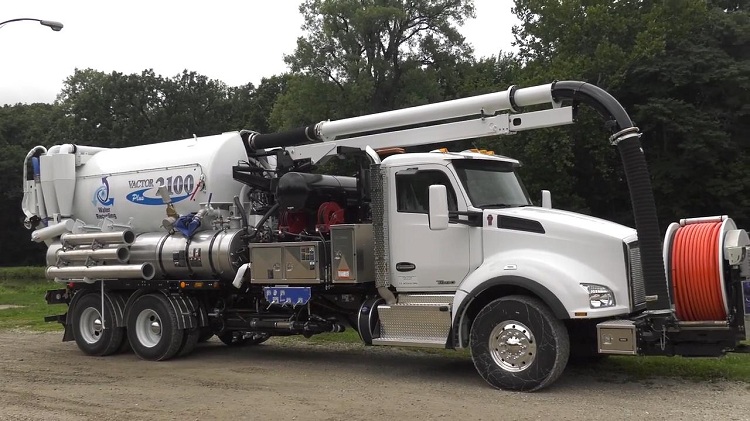
Dimensional cleaning equipment is often used to remove clogs in a common network, where large volumes of wastewater are collected
2. Specialized equipment mounted on the basis of a truck or van, or placed on a car trailer. With its help, it is possible to successfully carry out hydrodynamic flushing of large-diameter pipelines. The unit is equipped with an engine (gasoline, diesel or propane powered) and an additional tank that can be filled with water to achieve unit autonomy during hydrodynamic cleaning. Powerful equipment is transferred to specialized municipal services in order to efficiently clean the central sewer and external networks using pressures of more than 270 bar and sewage hoses over 150 meters in length.
The basic equipment of units for hydrodynamic cleaning of sewer systems is equipped with:
- high power engine and pump;
- water tank;
- drum and long hoses;
- nozzles (nozzles).
Additionally, it is possible to include in the package:
- high pressure gun;
- a tool designed to clean nozzles;
- metal frames with wheels for transporting the unit;
- pressure regulating devices;
- filters
- packing case.
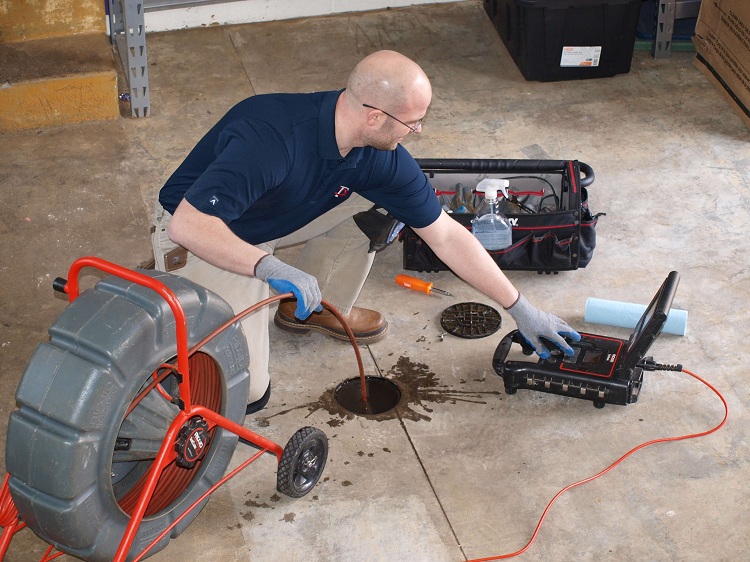
Devices for cleaning can be equipped with different types of engines, for work indoors it is better to choose an electrical appliance
According to the type of action, nozzles are distinguished:
- punch;
- rotary.
Depending on the nature of the blockage, nozzles of different types can be used:
- bottom, used to remove leaves, small branches and sand from storm sewers;
- punching, connected to eliminate long-standing dense blockage;
- universal;
- chain-carousel, the use of which is resorted to if it is impossible to deal with the blockage in another way.
If necessary, they use a special kind of nozzles to go through a bend in the pipeline, remove roots or fat growths, etc.
Why hydrodynamic pipe cleaning is beneficial
Compared with other methods of cleaning sewer systems, the use of hydrodynamics allows you to achieve certain advantages:
- high-quality cleaning of the system, which makes it possible to use it smoothly in the future for several years, as the self-cleaning properties of the pipeline are restored;
- quick operation, which does not take much time;
- absence of damage to the pipeline, including plastic, due to the soft impact on it;
- the absence of a decrease in efficiency with the complexity of the system configuration;
- work regardless of air temperature, even below 0º C and in the presence of ice plugs in the pipes;
- absence of environmental pollution by caustic solutions, dirt and dust during the operation of the unit.
Carrying out hydrodynamic cleaning, the cost of which is about ten dollars per linear meter, it is possible to avoid replacing the pipeline section, which allows to achieve significant cost savings.
How is the cleaning of the internal and external sewerage carried out hydrodynamically
When the hydrodynamic cleaning of autonomous sewage is carried out independently, then adhere to simple rules that allow you to achieve the desired result and not violate the integrity of the engineering network:
- water pressure is set no higher than 150 atmospheres so as not to damage the pipeline;
- preliminary audit of the state of the system allows you to determine the nature and degree of clogging and correctly select the nozzles necessary for greater efficiency;
- the unit is connected after immersing the nozzle to a sufficient depth. Power builds up gradually to avoid unpleasant consequences when a water hammer occurs;
- Do not accelerate the hose along the pipe. Faced with an area of tight clogging, it is worth trying to push the hose back and forth. If the attempts do not bring the desired result, you should pull out the hose and change the nozzle in order to pass too tight a blockage. You will need to install a piercing nozzle or chain-rotary;
- upon completion of the cleaning, if its result is unsatisfactory, the procedure is repeated. However, it is advised in any case to clean two to three times to achieve maximum efficiency. Then the ability of the pipes to self-clean will be restored, and new blockages will not form so quickly.
When cleaning the internal sewage system, it is recommended to resort to the use of solutions of reagents that remove greasy deposits and household products. To discharge the spent liquid, they resort to the use of a central sewer riser.
Cleaning the external sewage system is carried out in stages. The system section is first washed with water under pressure, and then the spent liquid is pumped out by the pump. It is advisable to use two units:
- for cleaning;
- in order to pump out sewage and sediment. They are dumped into the central sewer (if connected) or into the corresponding device in the autonomous system.
For domestic use, it may be sufficient to use a mini-sink, which is used by many car owners. Separate models can be used for cleaning even a 15-meter plot. Naturally, you need to get a flexible hose and a set of special nozzles. It is advisable to start buying these elements only after it turns out that the existing mini-washing model is suitable for carrying out hydraulic washing.
Conducting hydrodynamic cleaning of the sewage system allows you to restore the ability of the system to self-cleaning, which will allow us not to recall the problems with drains for several years. Specialized equipment is used at large facilities when working with large diameter pipes. For domestic use, acquiring even a compact portable unit that costs about five hundred dollars may not be a very effective investment. But an autonomous sewer system can be successfully cleaned by the hydrodynamic method and using a mini-sink, avoiding pollution of the territory.
